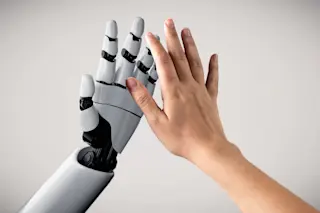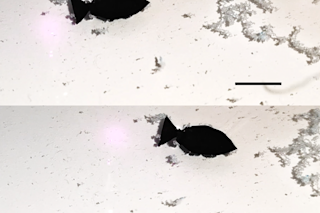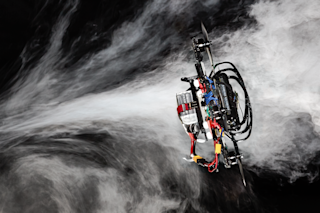Shlomi Mir's wind-powered, data-collecting Tumbleweed could help map treacherous desert terrain. Credit: Shlomi Mir When the Sons of the Pioneers crooned about “drifting along with the tumbling tumbleweeds,” they never had this in mind: a robotic tumbleweed that could someday be used to gather climate data as it trundles across the barren landscape. That's the brainchild of industrial designer Shlomi Mir, who built a prototype of the so-called Tumbleweed Desert robot with an eye toward tackling the problem of desertification. Mir is intimately familiar with the expanding desert in Israel, where he lives. Desertification, in Israel and elsewhere, is placing pressure on populations by destroying arable soil and vegetation, leading to famine, flooding, and dust storms. Lonely But Free The device is simple and self-sustaining. It features a metal, rounded frame with sails attached to its interior that catch the wind and propel the robot over all sorts of terrain. ...
A Wind-Powered Tumbleweed Robot to Gather Weather Data
Discover the innovative Tumbleweed Desert robot, designed for climate data gathering and mapping desertification in Israel.
More on Discover
Stay Curious
SubscribeTo The Magazine
Save up to 40% off the cover price when you subscribe to Discover magazine.
Subscribe













